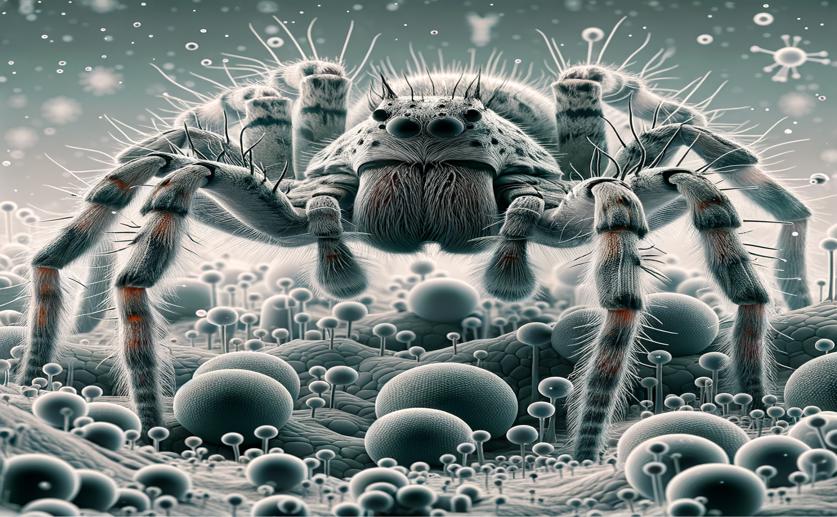
How the Common Wolf Spider Adapts to Low-Oxygen Environments: A Molecular Study
Greg Howard
6th July, 2024

Image Source: Natural Science News, 2024
Key Findings
- Researchers at Hunan Normal University studied how the spider Pardosa pseudoannulata adapts to low oxygen environments
- The spider adjusts its energy metabolism and antioxidant levels to survive in hypoxic conditions
- Key molecules like ATP, D-glucose 6-phosphate, and L-glutathione showed significant changes under low oxygen
References
Main Study
1) Integrated transcriptome and metabolome analysis reveals the molecular responses of Pardosa pseudoannulata to hypoxic environments
Published 4th July, 2024
https://doi.org/10.1186/s40850-024-00206-y
Related Studies
2) Hypoxia-mediated immunotoxicity in the blood clam Tegillarca granosa.
3) Locomotory, ventilatory and metabolic responses of the subterranean Stenasellus virei (Crustacea, Isopoda) to severe hypoxia and subsequent recovery.
Journal: Comptes rendus de l'Academie des sciences. Serie III, Sciences de la vie, Issue: Vol 320, Issue 2, Feb 1997
4) Adaptation to hypoxia in Drosophila melanogaster requires autophagy.



 25th June, 2024 | Greg Howard
25th June, 2024 | Greg Howard